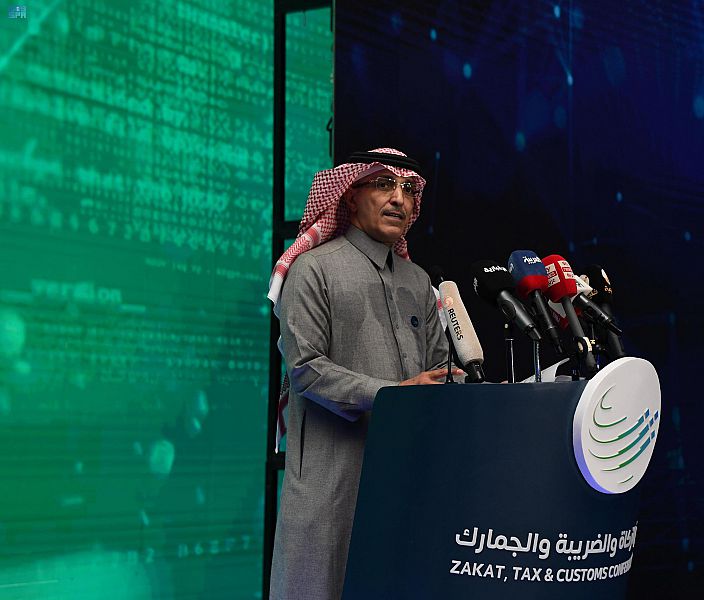Since the launch of Saudi Vision 2030, Saudi Arabia’s shadow economy has declined, nearing the average of 15 percent of GDP for developed countries.
This was confirmed by Saudi Minister of Economy and Planning Faisal Al-Ibrahim, during the opening of the Zakat, Tax, and Customs Conference, in the capital Riyadh. Finance Minister Mohammed al-Jadaan added, “The global average for the shadow economy is 23 percent, which is very large. What is meant here is all commercial activities that are not included in the national product of the state, but not trade in contraband.”
But what is a shadow economy?
As defined by the Economic and Social Commission for Western Asia (ESCWA), a shadow economy consists of activities that may be considered productive in an economic sense and also legal (provided that compliance criteria are met), but which are deliberately hidden from public authorities (e.g. in order to avoid paying taxes, paying social security contributions, or circumventing certain standards or requirements).
The size of the shadow economy can never be underestimated. In developed countries, it ranges from 10 percent to 25 percent of GDP, in developing countries it is more than 50 percent, and in some African countries it may be more than 70 percent.
“World Economics” estimated the size of the shadow economy in the Middle East in 2021, indicating that Lebanon ranks first with 31.4 percent of GDP, followed by Turkey with 31.2 percent.
In 2018, the International Monetary Fund estimated in a research paper that the rate of the shadow economy in most advanced economies is between 14 and 16 percent of GDP, 32 to 35 percent in emerging economies, and, in some Arab countries, it exceeds 34 percent.
The reasons for the expansion of the shadow economy vary from country to country. In some countries, this type of economy grows to escape complicated procedures or to avoid paying taxes.
Read: Saudi GDP grew seven straight quarters since pandemic
Al Jadaan
In a dialogue session, Saudi Finance Minister Mohammed Al-Jadaan stressed that “the shadow economy has become widespread in the world and is not exclusive to a specific country, according to the latest reports issued by the International Monetary Fund, which explained that 154 countries have a shadow economy between 10 percent and 60 percent, while the average reaches 32 percent of the economy.
“This is a very large scale by usual standards, so dealing with it is very important as a principle,” he said, stressing that governments’ solutions to tackle the shadow economy must be careful in confronting it as what may work in one country may not work in another.
He added that “technical progress in the Kingdom has contributed significantly to reducing this phenomenon using advanced development in technical infrastructure, in addition to the Central Bank and its technical expertise and digital infrastructure, which is much more advanced than developed countries,” stressing that the shift in payments to digital ones has reduced costs.
In the past five years, electronic payment machines in the Kingdom amounted to about 300,000 devices, while today it has reached about 1.2 million of these.
As for digital payments, they have grown in recent periods to 1700 percent, while the shift in electronic payments has reached 62 percent from less than 40 percent.
In the business sector, payments grew to between 80 percent and 82 percent.
Al Ibrahim
The latest estimate of the size of the kingdom’s shadow economy showed it close to developed economies, estimated at 15 percent. With regard to low-income countries, it is estimated at 30 percent, according to Minister of Economy and Planning Faisal Al-Ibrahim, who stressed that the size of the shadow economies in the Kingdom has decreased due to the solutions and initiatives that have been put forward.
An example of efforts to fight the shadow economy in the kingdom is the rise in cashless transactions. POS increased from 400,000 to 1.4 million points of sale, and the value of transactions doubled from 300 million riyals. One solution is also the application of electronic invoicing, which supported the fight against the shadow economy, in addition to other legislation such as regulating the contractual relationship with expatriates.
Al-Ibrahim stressed that fighting the shadow economy addresses economic challenges, such as low wages, low productivity, the absence or imbalance of competitiveness in the private sector, and the lack of access to social protection for everyone who deserves it, among others.
“The lower the proportion of the shadow economy, which leads to the benefit of the economy in general, the higher the GDP, the greater the opportunity for greater financing capacity, and fighting and reducing the shadow economy in the long term increases the attractiveness of the economy and enlarges the economic base,” he added.
For more on Saudi, click here.








